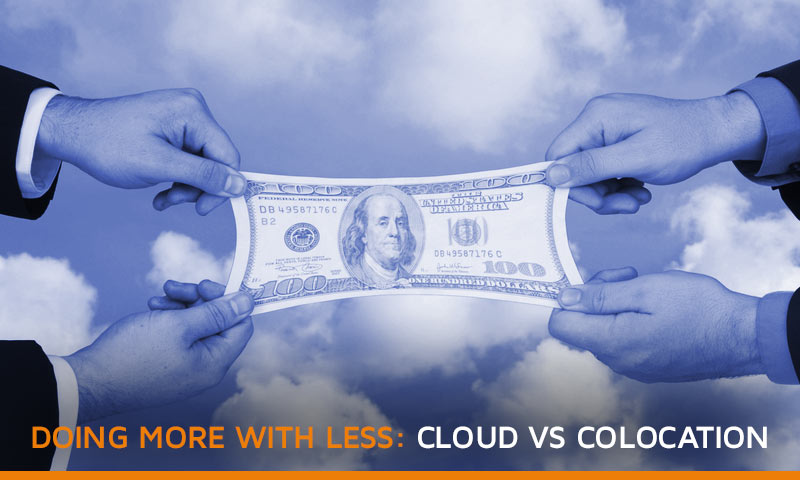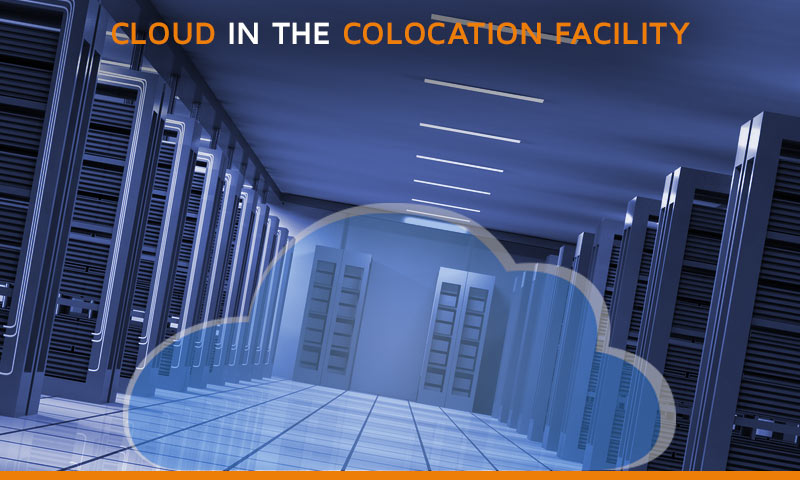What is Colocation and How Cloud Fits In
May 24, 2016Doing more with less: How Colocation and Cloud fit together
Exploding tech budgets have C level decision makers demanding IT operations do more with less. This is often heard in the board room, although the specifics are often industry-related and even company specific. Answering the question, what is colocation and how it differs from cloud, can offer solutions to the need for efficiency.
- “We need to pass a Sarbanes-Oxley related audit without changing our existing infrastructure.”
- “We need more space for our backend core IT operation.”
- “Our company needs to begin to experiment with Big Data without augmenting our capital budget.”
- “The legal team says we need a disaster recovery site and we need it fully operational within 6 weeks.”
- “We need to upgrade our core, server IT infrastructure while we maintain 24 x 7 x 365 services.”
How to meet the needs of budget and resource squeeze
While many CIOs keep a ready copy of their resignation letter in the top drawer of their desk when these demands seem overwhelming, many often readily acknowledge IT operations is not being unfairly singled out for these sorts of demands or this type of budget and resource squeeze. This is the same squeeze faced by almost all service departments in today’s business culture. The question is – how best to meet these needs.
Cloud Vs Colocation
Two strategies for meeting these needs are colocation and the cloud. Let’s dip in to explore and compare these strategies. Which fits certain needs? What characteristics in the business environment privilege one over the other?
What is Colocation?
Colocation is the back-end IT operation in which a firm leases space, often server “rack space” in a suitably equipped data center facility. In this case the firm, which will be the tenant, places servers, switches and storage in a data center owned and operated by a CSP (Colocation Service Provider). In its purest and most basic form, the CSP provides space, air conditioning, power, physical security and Internet connectivity.
Space is leased by the “rack,” or “cage” or “room” depending on CSP, the tenant firm’s needs and the lease agreement. Sometimes this is referred to as Infrastructure as a Service (IaaS). After the space is leased, the firm is responsible for moving equipment in, establishing connectivity, cyber security and setting up its required applications – just as they would in their own premises. In some cases a CSP also will offer the option of monitoring servers and doing routine tasks such as back-ups.
Cloud in the Colocation facility
Cloud providers such as AWS, Microsoft and Google, operate and run banks of servers in data center colocation facilities. They then lease space on those servers and assume the operations expenses and maintenance to run them for their customers. It benefits customers who don’t want the headaches and expenses of maintaining servers. Read more about the benefits of Colocation in a global economy
Cloud computing is the back-end IT operation in which a firm leases functionality. Sometimes this is referred to as Platform as a Service (PaaS) or Software as a Service (SaaS). If, for example, you use an application that runs on the Linux/Ruby/Python stack provided as a part of Amazon’s AWS Elastic Beanstalk, you rent time on Amazon Web Services for your software. In this case of PaaS, you provide the software, install it on this computing platform, debug and run it. The Google App Engine and Microsoft Azure are two other examples of PaaS.
Software as a Service (SaaS) is even more developed than PaaS. Gmail is a well-known example. There are, however, hundreds of examples of SaaS from SalesForce (one of the original SaaS products) to Microsoft Office Web Apps, Mozy and OneDrive Sync – both cloud backup services. Read more abouPaaS and going beyond phsical cross-connects
Advantages of Colocation
In the case of colocation, your IT staff is still responsible for the purchase and maintenance of your hardware and software. Colocation makes sense when the physical location is close enough to your IT operation – whether that’s across the street or across the city. Many firms use collocation as a second IT operation, either when they have outgrown the physical plant that houses their in-house IT operation or when they need a fully equipped disaster recovery site.
Further, if your legal staff indicates that your firm is subject to stringent data security and compliance audits, you may feel more comfortable keeping your data under the supervision of your own IT staff, even if it is off-site. In these circumstances, colocation has a strong advantage.
Advantages of Cloud
On the other hand, if your firm needs functionality, an additional suite of applications for example, that your IT staff cannot provide, or if you want your IT staff to focus on other areas, then purchasing this functionality in terms of cloud services, makes sense. This is particularly true if you can pay for only what you use. This is the most current contractual arrangement used by most PaaS or SaaS providers.
Whether your IT operation is collocated across the street (“colo”) or lives “in the cloud” (“nolo”) – or some combination of both, this is the future—and it’s here now.




